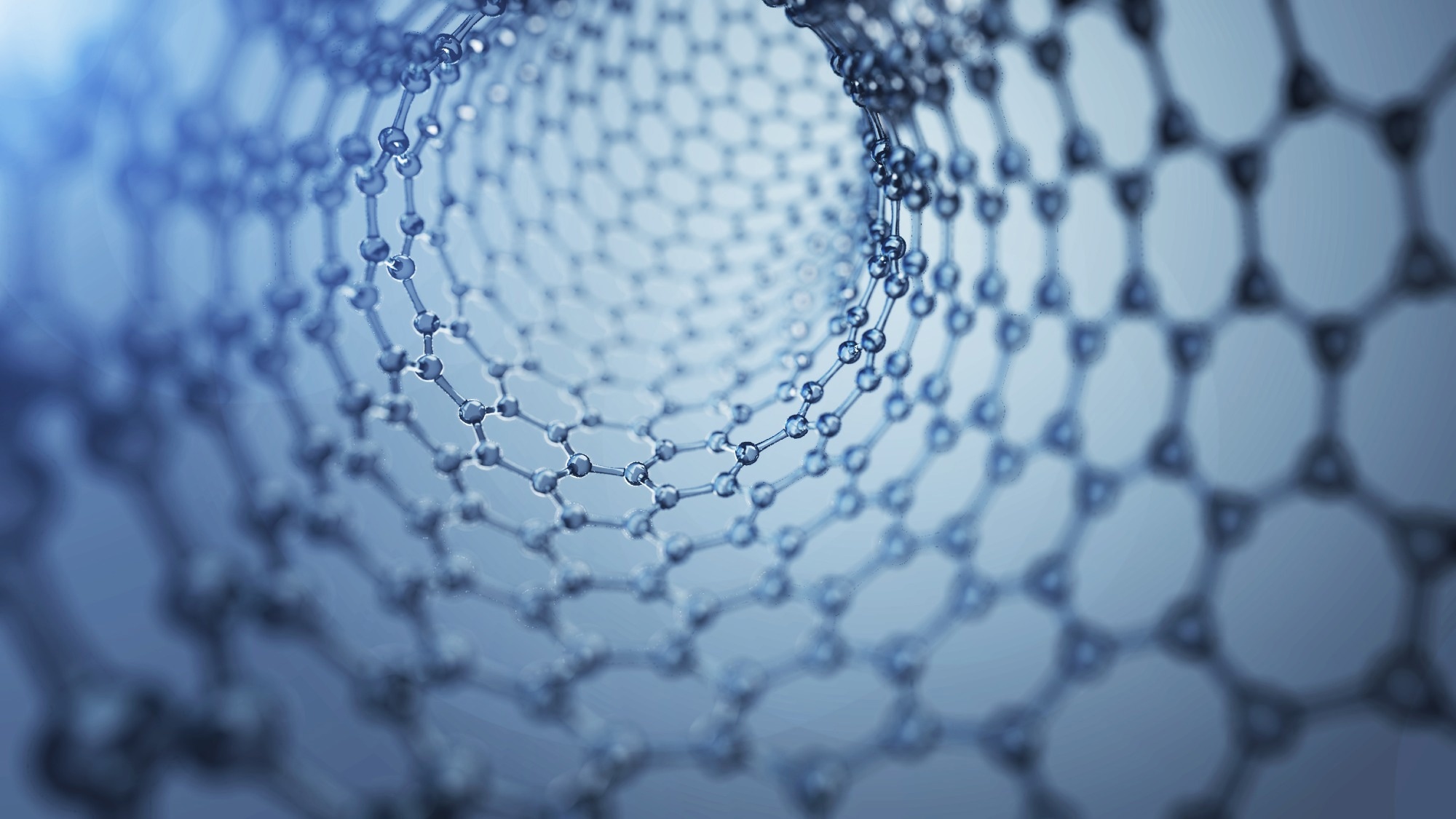Reviewed by Mila PereraNov 1 2022
As the electric vehicle (EV) industry is advancing, so too are the efforts in the research and development of superior lithium (Li)-ion batteries to power them. Examining and expanding fast charge-discharge technology and prolonged battery life are crucial challenges in their development.

Shutterstock.com/3d_illustrator
Some factors, such as features of the electrode-electrolyte interface, the diffusion of Li-ions, and electrode porosity, can help surpass these problems to achieve rapid charging and extended lifespan.
In the last few years, two-dimensional (2D) nanomaterials, thin sheet-like structures a few nanometers thick, have risen as prospective anode materials for Li-ion batteries. These nanosheets have a high density of active sites and a high aspect ratio, which facilitates rapid charging and excellent cycling performance.
Specifically, 2D nanomaterials established on transition-metal diborides (TMDs) have attracted scientific attention. TMDs have a high rate and extended cycling stability for Li-ion storage due to their honeycomb planes of boron and multivalent transition-metal atoms.
Currently, a team of researchers guided by professor Noriyoshi Matsumi from the Japan Advanced Institute of Science and Technology (JAIST) and professor Kabeer Jasuja from the Indian Institute of Technology (IIT) Gandhinagar are working to further investigate the potential of TMDs for the storage of energy.
The team carried out the first experimental research on the storage feasibility of titanium diboride (TiB2)-based hierarchical nanosheets (THNS) as an anode material for Li-ion batteries. The team included Rajashekar Badam, former Senior Lecturer at JAIST; Koichi Higashimine, Technical Specialist at JAIST; Akash Varma, former M.S. course student at JAIST; and Asha Liza James, Ph.D. Student at IIT Gandhinagar.
Details of their study were reported in the journal ACS Applied Nano Materials and made accessible online on September 19th, 2022.
The THNS were formed by oxidizing TiB2 powder with hydrogen peroxide, followed by centrifuging and freeze-drying the solution.
What makes our work stand out is the scalability of the method developed for synthesizing these TiB2 nanosheets. For any nanomaterial to translate into a tangible technology, scalability is the limiting factor. Our synthesis method only requires stirring and no sophisticated equipment. This is on account of the dissolution and recrystallization behavior exhibited by TiB2, a serendipitous discovery that makes this work a promising bridge from lab to the field.
Professor Kabeer Jasuja, Study Lead Author, Indian Institute of Technology (Gandhinagar)
Subsequently, the researchers built an anodic Li-ion half-cell employing the THNS as active anode material and examined the charge-storage features of the THNS-based anodes.
The researchers learned that the THNS-based anode exhibited a high discharge capacity of 380 mAh/g with a current density of merely 0.025 A/g. Moreover, they observed that a discharge capacity of 174 mAh/g could be achieved for a high current density of 1 A/g, with a capacity retention of 89.7% and a charge time of 10 minutes after 1,000 cycles.
Additionally, the THNS-based Li-ion anode could withstand very high current rates, in the order of 15 to 20 A/g enabling ultrafast charging in approximately 9-14 seconds. In the high current rate scenario, capacity retention above 80% was witnessed after 10,000 cycles.
The study’s results specify the appropriateness of the 2D TiB2 nanosheets as a candidate for rapid-charging and long-life Li-ion batteries. They also emphasize the benefit of nano-scaling bulk materials, such as TiB2, to achieve favorable properties, including outstanding high-rate capability, pseudocapacitive charge storage, and excellent cyclability.
Such quick-charging technology can accelerate the diffusion of EVs and significantly decrease waiting times for charging various mobile electronic devices. We hope our findings can stimulate more research in this field, which can eventually lead to the convenience of EV users, lesser air pollution in cities, and less stressful mobile life in order to enhance the productivity of our society.
Professor Noriyoshi Matsumi, Study Lead Author, Japan Advanced Institute of Science and Technology
The team anticipates that this extraordinary technology would soon be used in EVs and other electronic gadgets.
Journal Reference
Varma, A., et al. (2022) Titanium Diboride-Based Hierarchical Nanosheets as Anode Material for Li-Ion Batteries. ACS Applied Nano Materials. doi.org/10.1021/acsanm.2c03054.